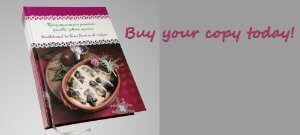Tradition and customs play an important role in the cultural identification of each nation. Regardless whether these are written records or oral telling, the information on way of life in the past enables us to preserve authenticity and identity of communities closely connected by the same geographic origin, to preserve traditional knowledge and skills that may not be necessary any more but represent a part of historical heritage. The traditional food, as a product of the environment, natural resources, but also culture, history and way of life in a certain area, plays an important role in overall tradition of a nation. All nations, countries and ethnic communities have specific dietary habits that differ more or less significantly from the habits of other communities. They are transferred from one generation to the next, have an important role in the folklore and customs of certain regions for hundreds or even thousands of years, and contribute to overall cultural diversity.
Traditional dishes are also the first part of heritage encountered when you meet new cultures. I am a travel-loving person. I love to meet new regions, different ways of life, new towns, new people and, of course, new cuisines. Each country I visited was proud to show its most beautiful culturally-historical monuments, the most beautiful mountains, rivers and lakes, but this was always spiced up with characteristic traditional dishes and beverages, and their absence would make all impressions incomplete. Each of these more or less new and unusual dishes was accompanied by a special story of their origin, revealing a part of tradition, history and national pride of these countries. In Peru, while I enjoyed the acidic taste of ceviche, I learned that this dish of fish and seafood marinated in lemon juice may be up to 4000 years old, and that only the Peruvian ceviche is original as it was later introduced to other countries of Latin America. In Nepal we were daily offered dal bhat, a dish of rice, lentils and curry, which for the Nepalese is more than a meal.
From the foreword, Prof Dr Slađana Šobajić
